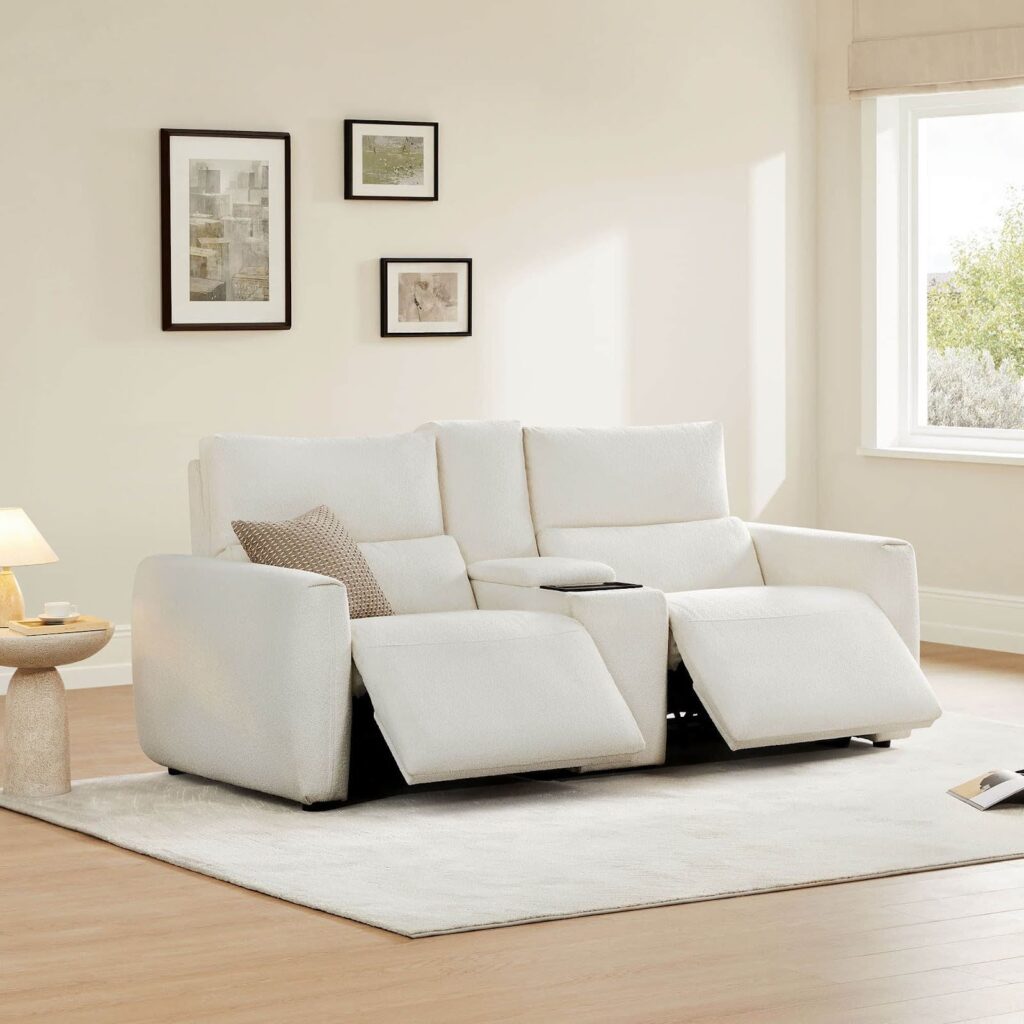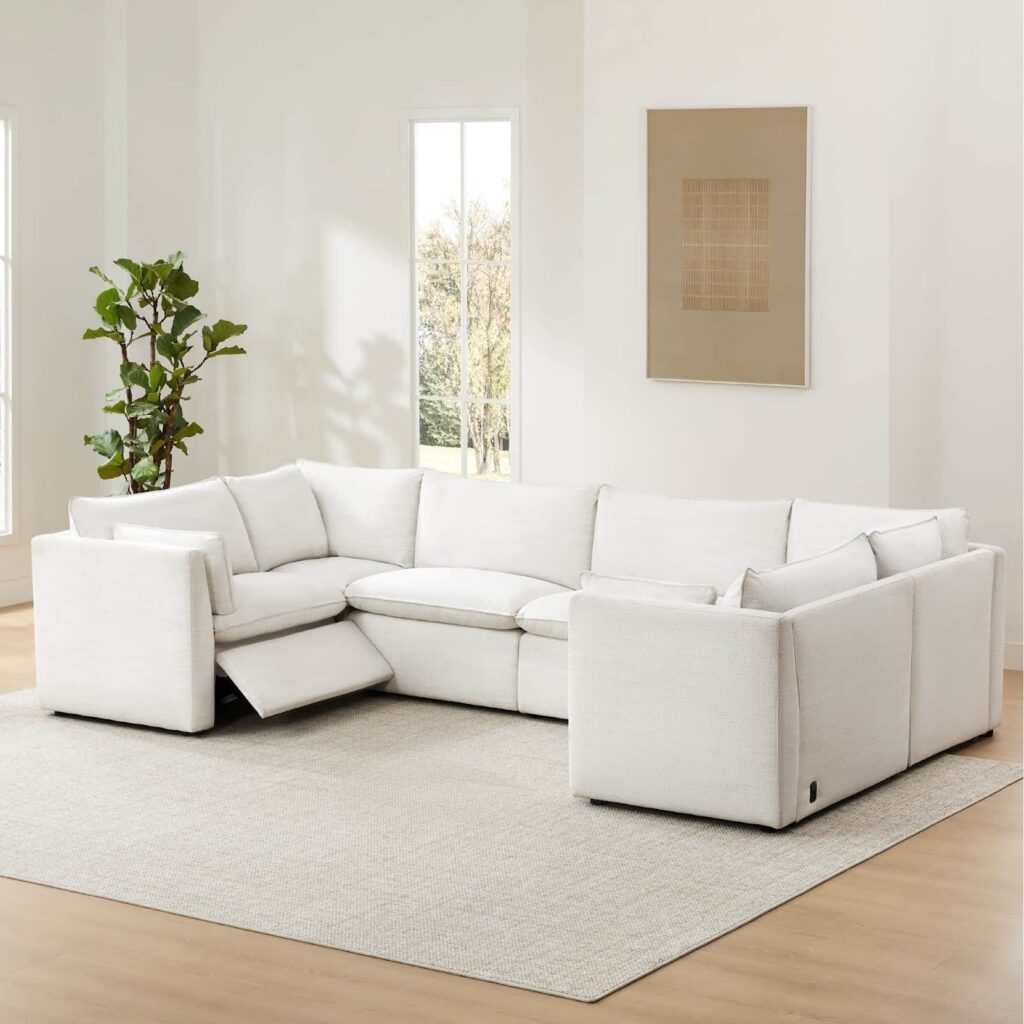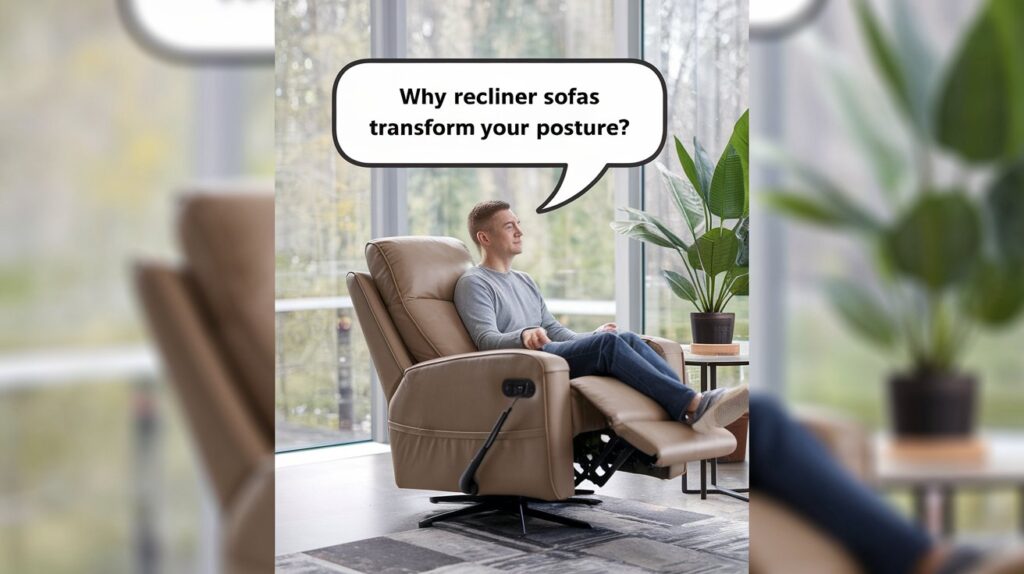Slouching on your sofa after a long day might feel comfortable at first, but the hidden toll on your posture can lead to years of discomfort and pain. With Americans spending an average of 6.5 hours daily sitting at home, traditional sofas have become unwitting contributors to a growing epidemic of back problems and poor posture. Enter the revolutionary world of recliner sofas – ingeniously engineered furniture that’s transforming how we think about comfort and spine health.
These modern marvels aren’t just about luxury; they’re sophisticated posture-correction systems disguised as stylish home furnishings. By combining ergonomic excellence with contemporary design, recliner sofas are proving that maintaining proper posture doesn’t mean sacrificing comfort or aesthetics.
Discover how these innovative pieces of furniture are becoming the cornerstone of healthier living rooms and better backs across the country.
The Posture Crisis: Why Traditional Sofas Fail Us

Traditional sofas, while appearing inviting, harbor serious design flaws that contribute to widespread posture problems. The typical sofa’s uniform cushioning and fixed back angle force users into unnatural positions, causing excessive strain on the lumbar spine.
Recent studies indicate that 80% of Americans experience back pain, with improper seating being a primary contributor. The average sofa’s seat depth often exceeds ergonomic recommendations, encouraging users to slouch forward or sink too deeply into the cushions. This creates a chain reaction of misalignment, from compressed vertebrae to strained neck muscles.
Homeowners frequently report persistent discomfort, with many discovering that their beloved sofas are actually undermining their spinal health. The lack of proper support points in conventional sofas leads to compensatory postures that, over time, can result in chronic muscular imbalances and accelerated disc degeneration.
This growing awareness of traditional sofa shortcomings has sparked a crucial conversation about the need for more anatomically conscious furniture design.
Recliner Sofas: Engineering for Spinal Alignment
Adjustable Reclining Mechanics Explained
Modern recliner sofas utilize sophisticated multi-point articulation systems that revolutionize spinal support. The key lies in their precision-engineered mechanisms that allow seamless transitions between positions, maintaining optimal alignment throughout movement. Unlike basic recliners, these advanced systems feature multiple pivot points that work in harmony to support the natural S-curve of the spine.
The headrest can be independently adjusted to maintain proper cervical alignment, preventing the forward head posture that often leads to neck strain. This targeted support system ensures the neck remains in a neutral position while reading, watching TV, or relaxing.
Pressure Distribution Technology

At the heart of modern recliner design lies revolutionary pressure distribution technology that fundamentally changes how body weight interacts with seating surfaces. Advanced memory foam layers work in concert with responsive support zones to eliminate pressure points that cause discomfort and poor posture.
The dynamic cushioning system actively responds to movement, maintaining consistent support even as users shift positions. This technology incorporates graduated density foams that provide firmer support in crucial areas while offering softer comfort zones elsewhere. The result is a seating experience that naturally encourages proper spinal alignment while eliminating the pressure build-up common in traditional sofas.
High-tensile steel suspension systems beneath the cushioning further enhance weight distribution, creating a floating sensation that reduces spinal compression.
Proven Posture Benefits: Beyond Comfort
Clinical research has demonstrated remarkable health improvements among recliner sofa users, with studies showing up to 60% reduction in lower back pain within three months of regular use. Orthopedic specialists point to the elevation capabilities as a key factor in promoting healthy blood circulation, particularly beneficial for those with sedentary lifestyles.
Dr. Sarah Chen, a leading ergonomist, reports that patients using quality recliner sofas experience significant relief from spinal compression and reduced muscle tension. The controlled positioning offered by modern recliners helps maintain the spine’s natural curves, effectively preventing the progression of degenerative disc conditions. Physical therapists have documented improved recovery times for patients with chronic back issues who incorporate recliner seating into their daily routines.
The ability to adjust positions throughout the day proves especially valuable in preventing the static muscle strain associated with fixed seating. Ergonomic specialist Dr. James Martinez notes, “The dynamic support provided by well-designed recliner sofas isn’t just about comfort – it’s actively contributing to spinal health by promoting natural movement patterns and proper weight distribution.”
Style Meets Support: Modern Design Solutions
Gone are the days when recliner sofas meant sacrificing style for comfort. Today’s recliner designs seamlessly blend sophisticated aesthetics with ergonomic excellence, challenging outdated perceptions of bulky, oversized furniture.
Leading manufacturers like CHITALIVING now offer sleek, contemporary silhouettes that complement modern interior design trends while maintaining superior posture support. Innovative wall-hugger mechanisms allow these pieces to be placed just inches from walls, making them perfect for urban living spaces.
The latest collections feature clean lines, tailored upholstery, and designer-inspired details that rival high-end stationary sofas. Premium materials like top-grain leather, performance velvet, and stain-resistant fabrics ensure these pieces remain both beautiful and functional.
Hidden reclining mechanisms preserve the sofa’s elegant profile when upright, while modular configurations allow homeowners to customize layouts for their specific spaces. The result is furniture that not only supports proper posture but also serves as a sophisticated centerpiece in any contemporary living room.
Choosing Your Posture-Perfect Recliner
Must-Have Support Features
When selecting a recliner sofa for optimal posture support, prioritize models with adjustable lumbar support that can be fine-tuned to your spine’s natural curve. The ideal seat depth should allow you to sit with your back fully against the backrest while maintaining a 2-3 finger gap between the back of your knees and the seat edge.
Look for models featuring articulating headrests that can be positioned to maintain neutral neck alignment, particularly important during extended periods of reading or screen viewing. The backrest should provide consistent support from the lumbar region through the upper back, with a slight recline angle of 100-110 degrees in the upright position.
Materials for Lasting Comfort
The foundation of lasting comfort lies in high-resilience foam with a density rating of at least 2.5 pounds per cubic foot for seat cushions and 1.8 pounds for back support. Multi-layered cushioning systems incorporating memory foam top layers provide optimal pressure relief while maintaining proper posture alignment.
For upholstery, consider breathable performance fabrics that regulate temperature and prevent moisture buildup during extended sitting periods. While genuine leather offers durability and natural temperature regulation, modern performance fabrics provide superior stain resistance and easier maintenance.
Look for materials with a minimum of 50,000 double rubs in durability testing to ensure longevity. The underlying frame should feature hardwood construction with reinforced joints to prevent sagging that could compromise posture support over time.
The Future of Ergonomic Home Comfort
The transformation of recliner sofas from simple comfort furniture to sophisticated posture-correction systems marks a revolutionary advancement in home wellness. These innovative pieces prove that protecting your spinal health doesn’t require compromising on style or comfort.
By incorporating precision-engineered support systems, advanced pressure distribution technology, and contemporary design elements, modern recliners effectively address the widespread issues of poor posture and back pain that plague many Americans. The investment in a quality recliner sofa extends far beyond immediate comfort – it’s an investment in your long-term health and wellbeing.
As we continue to spend significant time in our living spaces, the importance of proper postural support cannot be overstated. With their ability to combine ergonomic excellence, aesthetic appeal, and proven health benefits, recliner sofas are not just transforming our posture – they’re revolutionizing the very way we think about healthy living at home.

